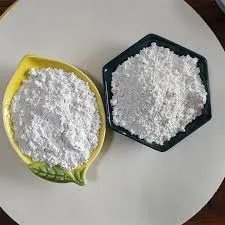- Afrikaans
- Albanian
- Amharic
- Arabic
- Armenian
- Azerbaijani
- Basque
- Belarusian
- Bengali
- Bosnian
- Bulgarian
- Catalan
- Cebuano
- Corsican
- Croatian
- Czech
- Danish
- Dutch
- English
- Esperanto
- Estonian
- Finnish
- French
- Frisian
- Galician
- Georgian
- German
- Greek
- Gujarati
- Haitian Creole
- hausa
- hawaiian
- Hebrew
- Hindi
- Miao
- Hungarian
- Icelandic
- igbo
- Indonesian
- irish
- Italian
- Japanese
- Javanese
- Kannada
- kazakh
- Khmer
- Rwandese
- Korean
- Kurdish
- Kyrgyz
- Lao
- Latin
- Latvian
- Lithuanian
- Luxembourgish
- Macedonian
- Malgashi
- Malay
- Malayalam
- Maltese
- Maori
- Marathi
- Mongolian
- Myanmar
- Nepali
- Norwegian
- Norwegian
- Occitan
- Pashto
- Persian
- Polish
- Portuguese
- Punjabi
- Romanian
- Russian
- Samoan
- Scottish Gaelic
- Serbian
- Sesotho
- Shona
- Sindhi
- Sinhala
- Slovak
- Slovenian
- Somali
- Spanish
- Sundanese
- Swahili
- Swedish
- Tagalog
- Tajik
- Tamil
- Tatar
- Telugu
- Thai
- Turkish
- Turkmen
- Ukrainian
- Urdu
- Uighur
- Uzbek
- Vietnamese
- Welsh
- Bantu
- Yiddish
- Yoruba
- Zulu
Novemba . 24, 2024 20:55 Back to list
Disinfectants Commonly Utilized in Veterinary Clinics for Optimal Hygiene Practices
The Role of Disinfectants in Veterinary Clinics Ensuring Animal Health and Safety
In veterinary medicine, maintaining a sterile environment is crucial not only for the health of animals but also for the safety of veterinary professionals and the overall public health. Disinfectants play a pivotal role in achieving these objectives by effectively eliminating pathogens that can cause infections in both animals and humans. The choice of disinfectants used in veterinary clinics is influenced by a variety of factors, including their efficacy against a broad spectrum of microorganisms, safety for staff and patients, and compatibility with equipment and surfaces.
Types of Disinfectants Commonly Used in Veterinary Clinics
There are several categories of disinfectants used in veterinary practices, each with its specific application and efficacy. Among the most common types are
1. Quaternary Ammonium Compounds (Quats) These are widely used in veterinary clinics due to their ability to kill a broad range of bacteria, enveloped viruses, and fungi. Quaternary ammonium compounds are generally considered safe for use around pets and humans and are effective in cleaning surfaces and equipment.
2. Phenolic Compounds These disinfectants are effective against bacteria and viruses and can be used on hard surfaces. However, they can be toxic to animals if not used properly, making careful application crucial in veterinary settings.
3. Chlorine Compounds Sodium hypochlorite (bleach) is a potent disinfectant recognized for its effectiveness against a wide range of pathogens, including bacteria, viruses, and fungi. While effective, it can be corrosive and produce harmful fumes, necessitating strict guidelines to ensure the safety of both staff and animals during application.
4. Hydrogen Peroxide This substance serves as a disinfectant and a cleaning agent. It is effective against bacteria, viruses, and fungi and can be decomposed into harmless by-products. Its use is growing in popularity due to its effectiveness and comparatively low toxicity.
5. Aldehydes Compounds such as glutaraldehyde are highly effective disinfectants that can kill a broad spectrum of microbes. However, because they can be irritating to skin and respiratory systems, their use is often limited to specific situations where their efficacy is critically needed.
disinfectants used in veterinary clinics

Efficacy and Safety Considerations
The selection of disinfectants in veterinary clinics must balance efficacy with safety. Disinfectants that are strong enough to kill pathogens can also pose risks to animal and human health. As such, it's essential for veterinary professionals to use disinfectants that are safe for the specific species they are treating while still effective against the pathogens present.
The dilution rates often instruct on labels are also critical, as improper dilution can increase toxicity while reducing disinfectant effectiveness. Furthermore, specific safety protocols should be followed, including the use of gloves, masks, and other personal protective equipment (PPE) when handling potent disinfectants.
Regulatory Compliance and Best Practices
Veterinary clinics are obligated to adhere to guidelines set forth by health organizations concerning the use of disinfectants. Regular training for staff ensures that everyone understands the importance of disinfectant protocols and safety measures, including proper application techniques and the time required for disinfectants to remain wet on surfaces for effective microbial kill rates.
Routine cleaning and disinfection of high-touch areas, such as waiting rooms, examination tables, and surgical suites, are vital. Likewise, protocols for cleaning instruments and equipment must be implemented to prevent cross-contamination between patients.
Conclusion
Disinfectants are indispensable in veterinary clinics, playing a crucial role in infection control and the promotion of overall animal health and safety. The effectiveness of disinfection hinges on the careful selection of products, compliance with safety regulations, and the consistent application of best practices. By ensuring that veterinary environments are hygienic and safe, veterinary professionals can continue to provide excellent care while safeguarding the health of animals and the community at large. Through continued education and adherence to established protocols, the veterinary community can effectively leverage disinfectants to meet health standards and respond to emerging infectious threats, ensuring a healthier future for pets and their owners.
-
Guide to Oxytetracycline Injection
NewsMar.27,2025
-
Guide to Colistin Sulphate
NewsMar.27,2025
-
Gentamicin Sulfate: Uses, Price, And Key Information
NewsMar.27,2025
-
Enrofloxacin Injection: Uses, Price, And Supplier Information
NewsMar.27,2025
-
Dexamethasone Sodium Phosphate Injection: Uses, Price, And Key Information
NewsMar.27,2025
-
Albendazole Tablet: Uses, Dosage, Cost, And Key Information
NewsMar.27,2025













